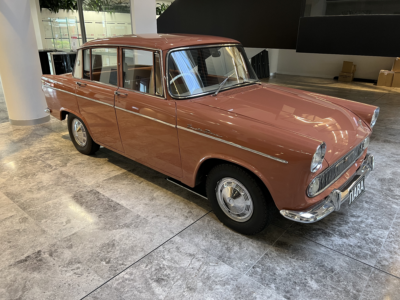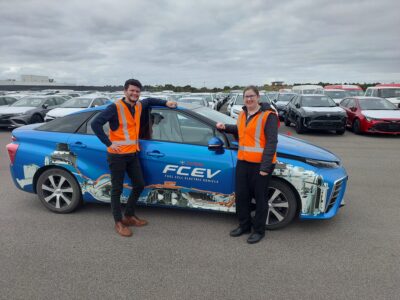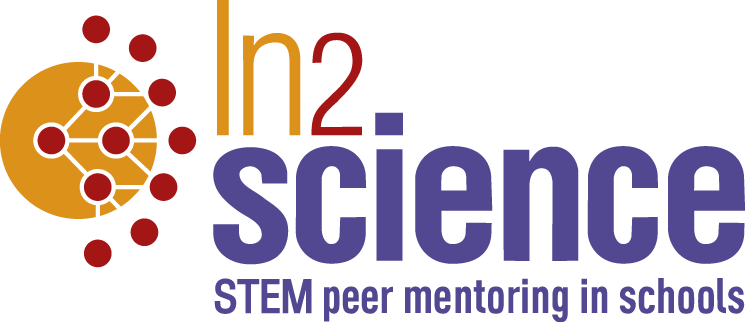By Zach Wingrave

 Everybody, start your engines! Specifically, the hydrogen ones.
Everybody, start your engines! Specifically, the hydrogen ones.
Back in May, our intrepid Program Manager Nicole and I had the thrill and the pleasure of visiting and touring Toyota Australia’s incredible Centre of Excellence facility in Altona, in Melbourne’s south-west. The event was organised by the Toyota Community Trust, a generous initiative that is committed to giving back to the wider Melbourne community in several key areas, from education to renewable energy to traffic safety, and of which In2science is a proud beneficiary.
Located on the site of Toyota’s last operating manufacturing plant in Australia, the Centre of Excellence now stands as a testament to our history of automotive engineering. Entering the foyer, we were instantly greeted by the first and the last cars built by Toyota in Australia; a 1963 Tiara 1500 Sedan, and a 2017 Camry Atara SX 5A. The slim lines and aerodynamic curves of the Camry were in stark contrast to the boxy, rectangular outfitting on the Tiara, perfectly capturing the shift in design thinking and aesthetics over just 54 years of development.

The excitement didn’t stop there! Despite manufacturing ending in 2017, work has not ceased at the Altona plant. In addition to housing the Community Trust, the facility continues to maintain a staff of product designers, engineers, and trade specialists. In fact, the Toyota Hilux, a staple workhorse around the globe, is designed right here in Melbourne! We learned this as part of a secretive behind-the-scenes tour of the product design and prototyping factory floor, where I was surprised to learn that clay moulding is still the industry standard method of refining the design and symmetry of a modern vehicle – with the help of 3D modelling and multi-million dollar scanning and printing equipment of course! Excitingly, one of our very own In2science Leaders has commenced a part-time role at this very facility, which you can read about in our companion article by Rachel Ella.
The afternoon brought the most thrilling component of our visit: an opportunity to test drive some of Toyota’s latest vehicles on the in-house test track, including a variety of hybrid and electric vehicles. Chief among these was the Gen 1 Mirai, a wholly unique vehicle in that it is powered by Hydrogen Fuel Cell technology. The science behind the process was fascinating. As explained by one of Toyota’s hydrogen research specialists, hydrogen is stored as a gas inside three tanks within the vehicle. This gas is slowly introduced to the fuel cell under the bonnet, which combines with oxygen taken in through the front grille during motion and, through a process known as reverse electrolysis, generates electricity and a single by-product: water expelled as vapour through the exhaust.
While Toyota acknowledged that fully electric vehicles are the future of renewable energy in motor vehicles for now (there are only three hydrogen refuelling stations in the entire country as of today), the prospect of a car that requires nothing but two of the most naturally abundant elements in the world and which produces naught but 335 Newton-metres of torque and a harmless spray of water by way of exhaust makes this newly-minted car nerd very, very excited about the future of motoring.
Besides learning about Toyota’s latest research and efforts to support the industry in Australia, the opportunity to network with like-minded organisations also funded by the Toyota Community Trust was a highlight of the day. Nicole and I met some truly inspiring people and were able to foster some new collaborations. Each organisation in attendance presented on the outstanding work they do and how Toyota is helping to make that happen. Without their generous contribution, important aspects of In2science, such as the Mentor Leaders Program and Awards Night, wouldn’t even make it off the starting grid. In2science thanks the Toyota Community Trust for their ongoing support and interest in our wonderful program.


